Ever stare at your kitchen and dream of a change, only to be stopped by the thought of a messy, expensive, and permanent renovation? You’re not alone. For many homeowners and especially renters, the high cost and commitment of a traditional remodel feel overwhelming. You want a stylish, modern kitchen, but your budget and rental agreement say otherwise.
This is where the game changes. Imagine giving your kitchen a stunning makeover in a single weekend, with no demolition dust and for a fraction of the cost. Peel and stick kitchen tiles are the 2025 solution that makes this possible. They are the ultimate DIY kitchen upgrade for anyone seeking style, affordability, and flexibility.
This guide is your single, all-in-one resource for mastering this trend. We've compiled everything you need to know for 2025, from the hottest design trends and common installation mistakes to renter-specific hacks and eco-conscious choices. By the end, you'll have the confidence to create a kitchen you absolutely love.
What Are Peel and Stick Kitchen Tiles?
Have you ever wondered what exactly separates modern self-adhesive tiles from the flimsy vinyl decals of the past? This section clarifies what today's high-quality tiles are made of and why they’ve become a design powerhouse.
Peel and stick kitchen tiles are exactly what they sound like: decorative tiles with a self-adhesive backing that you peel and apply directly to a smooth surface. Think of them not as simple stickers, but as engineered panels designed for durability and style. They offer a simple way to create a beautiful peel and stick backsplash or feature wall.
The magic is in their construction. Unlike a simple sheet of vinyl, modern tiles are often made from several layers. This includes a durable vinyl or composite top layer, a high-resolution design image, and a strong adhesive backing. This layered approach gives them a texture and depth that convincingly mimics real materials.
Key Types of Peel and Stick Tiles
Not all tiles are created equal. The market in 2025 offers a fantastic variety, each with its own look and feel.
- Vinyl (PVC) Tiles: These are the most common and affordable. They are lightweight, water-resistant, and come in an endless array of designs. They are perfect for a quick, budget-friendly DIY kitchen upgrade.
- Gel Tiles: These have a 3D epoxy or polyurethane top layer that creates a glossy, gel-like finish. This gives them a more realistic, three-dimensional appearance that closely resembles glazed ceramic or glass.
- Metal Tiles: Made from lightweight aluminum or stainless steel, these tiles offer a sleek, industrial, or modern look. They are exceptionally durable and heat resistant peel and stick backsplash options, ideal for behind a stove.
- Stone & Wood Composite Tiles: A newer innovation, these tiles blend vinyl with stone or wood powder. This creates a more rigid, textured, and premium-feeling tile that is hard to distinguish from the real thing.
Why They’re Trending in 2025
The rise of peel and stick kitchen tiles isn't just about convenience; it's a reflection of how we live now. People want beautiful homes without the long-term commitment or financial strain. A recent survey noted that over 40% of DIY enthusiasts prefer peel-and-stick solutions for their speed and simplicity.
They perfectly align with the desire for personalization and renter-friendly solutions. Plus, manufacturing advancements mean the designs for 2025 are more sophisticated than ever, from hyper-realistic marble veining to matte finishes and intricate geometric patterns.
Peel and Stick Tiles vs. Ceramic Tiles for Kitchens
The choice between peel and stick and traditional ceramic tiles comes down to five key factors: cost, installation, permanence, durability, and style.
- Cost: Peel and stick is the clear winner. You save not only on the materials but also on labor, grout, mortar, and specialized tools.
- Installation: A traditional tile job is a multi-day project requiring skill and creating significant mess. Removable kitchen tiles can be installed in an afternoon with just a few basic tools.
- Permanence: Ceramic is for life. This is great if you're certain of your design choice but a major drawback for renters or those who like to update their style. Peel and stick offers a temporary or semi-permanent solution.
- Durability: While ceramic is tougher against deep scratches, high-quality waterproof peel and stick tiles for kitchen use are engineered to resist moisture, heat, and stains for years with proper care.
- Style: Ceramic offers timeless appeal, but peel and stick now rivals it in design variety. From subway to herringbone, you can find a trendy style to fit any aesthetic without the lifelong commitment.

Are Peel and Stick Tiles Good for Kitchens?
Feeling uncertain if these tiles can actually stand up to the heat, steam, and splatters of a real, working kitchen? This section directly addresses the common concerns about durability, heat, and moisture to give you complete confidence.
This is the most critical question, and the answer is a resounding yes—provided you choose the right product and install it correctly. The performance of peel and stick kitchen tiles in a high-traffic area like a kitchen depends on their quality and your preparation.
A common misconception is that these tiles will peel off within months. While this might be true for cheap, low-quality products, premium tiles are engineered for longevity. They use powerful adhesives and protective top coats that create a water-resistant seal, keeping them secure and looking great for years.
POLL: How long did your peel and stick tiles last?
Answering Durability and Longevity Concerns
How long do they really last? With proper installation on a clean, smooth surface, you can expect high-quality tiles to last anywhere from 3 to 10 years, or even longer. For a family that cooks daily, a high-quality vinyl or composite tile will easily handle splashes and wipe-downs without issue.
Pro-Tip: The secret to longevity is surface preparation. The wall must be completely clean, dry, and free of dust or grease. Applying a coat of primer before installation can dramatically improve adhesion, especially on semi-gloss paint.
Heat and Moisture Resistance Explained
The kitchen backsplash is a demanding environment. It faces steam from boiling pots, splatters from frying pans, and constant wiping.
- Heat Resistance: Always check the manufacturer's specifications. Most quality tiles are rated as a heat resistant peel and stick backsplash material, safe for use behind a stovetop. However, a 6-8 inch gap between the burner and the tiles is generally recommended for safety. Metal tiles offer the highest level of heat resistance.
- Moisture Resistance: Waterproof peel and stick tiles for kitchen walls are the standard. The vinyl or composite material itself is impervious to water. The key is ensuring a tight seal between tiles so moisture cannot seep behind them. Many designs have an overlapping edges to make this process foolproof.
The Ultimate Renter-Friendly Kitchen Makeover
For renters, peel and stick tiles are a revolutionary product. They offer a way to completely personalize a cookie-cutter kitchen without risking your security deposit. Because they are removable kitchen tiles, you can add a stylish, protective backsplash and simply peel it off when you move.
Case Example: Sarah, a renter in a city apartment, used gel-based subway tiles to cover a dated, painted backsplash. After living there for three years, she easily removed the tiles with a hairdryer to soften the adhesive. The wall underneath was left clean and undamaged, securing her full deposit back.
Want to see how it's done? Our guide offers a deep dive into the easiest installation methods and top designs for 2025. Explore our article on How to Install Peel and Stick Tiles & Best Designs 2025 for a complete walkthrough.

Best Peel and Stick Kitchen Tiles for 2025
Feeling overwhelmed by all the design choices and not sure what will look good in your space? Here, we showcase the top-rated styles for 2025 and guide you toward the perfect look for your kitchen, from modern to eco-friendly.
The right design can elevate your entire kitchen. In 2025, the trends are all about texture, sophisticated patterns, and natural looks. Gone are the days of flat, obviously fake tiles. Today’s best options offer depth and character.
For a deeper look at the latest trends and installation tips, the go-to resource is our article on Peel Stick Backsplash Kitchen Ideas 2025. It’s packed with visual inspiration to get you started.
Top-Rated Designs for Backsplashes
Certain styles continue to dominate because they are timeless and versatile.
- Modern Subway Tiles: The classic 3x6 inch subway tile is still a favorite, but 2025 sees a twist. Look for options with darker, contrasting "grout" lines for a graphic look, or choose tiles with a subtle bevel or handmade texture for more character.
- Herringbone & Chevron: These dynamic patterns add a sense of movement and luxury. They work exceptionally well in both small and large kitchens, drawing the eye upward and making the space feel more expansive.
- Intricate Geometric & Mosaic Styles: From hexagons to fan-shaped "fish scale" tiles, geometric patterns are perfect for creating a bold statement. They are a fantastic way to inject personality and color into a neutral kitchen.
Stylish Looks: Matte Finishes and Marble
Two specific looks are defining kitchen style in 2025:
- Matte Finishes: Moving away from high-gloss everything, matte black, green, and blue tiles are gaining huge popularity. A matte finish feels modern, sophisticated, and does a better job of hiding fingerprints and water spots. It’s an understated yet powerful choice.
- Realistic Marble Look: Thanks to high-definition printing, peel and stick backsplash tiles that mimic Carrara or Calacatta marble are incredibly convincing. They provide the luxe look of a stone slab for a tiny fraction of the price and effort. This is one of the most popular choices for a fast, high-impact DIY kitchen upgrade.
Eco-Conscious and Budget Picks
You don’t have to choose between sustainability and your budget. The market for eco-friendly peel and stick tiles kitchen options is growing. Look for products made from recycled materials or those that are free from harmful chemicals like phthalates and lead.
For budget-conscious renovators, buying in bulk packs or looking for classic designs like simple white subway tiles can keep costs extremely low. Often, you can tile an entire standard backsplash for under $100.
How to Install Peel and Stick Kitchen Tiles
Nervous about messing up the installation and ending up with crooked, peeling tiles? This step-by-step guide breaks down the process into simple, manageable actions and highlights the critical mistakes to avoid, ensuring a professional-looking result.
The beauty of peel and stick kitchen tiles is how easy they are to install. With a little patience and preparation, anyone can achieve a flawless finish. This isn't a project that requires years of experience; it just requires attention to detail.
For a complete beginner-focused guide with extra troubleshooting tips, the best resource is our article "Easy Guide: Install Peel & Stick Subway Tiles". It's designed to make your first project a success.
Pre-Installation Checklist
Your Step-by-Step Installation Guide
Follow these steps for a perfect application every time.
- 1.Gather Your Tools: You don't need much. A tape measure, a pencil, a level, a utility knife or sharp scissors, and a smoothing tool (like a plastic squeegee or credit card) are all you need.
- 2.Clean and Prepare the Surface: This is the most important step. Thoroughly clean the wall with a degreasing cleaner to remove any oil or grime. The surface must be completely dry, smooth, and dust-free before you begin.
- 3.Measure and Plan Your Layout: Measure the area and find the center point. It's best to start in the center and work your way out to ensure the design is balanced. Use a level to draw a straight guideline to follow for your first row of tiles.
- 4.Cut Tiles as Needed: Before you peel, do a "dry fit" of the tiles along the wall. You will likely need to cut tiles to fit around outlets, windows, or at the end of a row. Measure carefully and use a sharp utility knife and a straight edge for clean cuts.
- 5.Peel and Stick: Peel back a portion of the backing paper—not all at once. Align the tile with your guideline, and gently press it onto the wall. Once you are happy with the placement, press firmly from the center out, using your smoothing tool to remove any air bubbles.
- 6.Overlap and Lock: Most modern tiles have an overlapping grout line or edge. Make sure you overlap these sections as directed by the manufacturer to create a seamless and waterproof barrier.
Ready to start your project but want a step-by-step visual guide? Check out our complete DIY Peel and Stick Kitchen Backsplash Guide for all the details and renter hacks you'll need.
Common Mistakes to Avoid
- Skipping the Cleaning Step: Even invisible grease will prevent the tiles from sticking properly. Do not skip this.
- Not Using a Guideline: "Eyeballing" it will almost always lead to a crooked result. A level and a pencil are your best friends.
- Stretching the Tiles: Vinyl tiles have some flex. Do not pull or stretch them to fit, as they will shrink back over time, creating gaps.
- Applying to Textured Walls: Self-adhesive tiles need a smooth, flat surface. If your wall is textured, you'll need to sand it smooth or install a thin panel of hardboard first.

Maintenance and Longevity of Peel and Stick Tiles
Wondering if your beautiful new backsplash will look just as good a few years from now? This section gives you the exact cleaning routines and long-term care tips to maximize the lifespan of your tiles and keep them looking brand new.
One of the best features of peel and stick tiles is their low-maintenance nature. Unlike traditional grout which can stain and crumble, the surface of these tiles is non-porous and easy to care for. With the right routine, your peel and stick backsplash can look pristine for years.
The key is to use gentle cleaning methods. Harsh, abrasive cleaners or scrubbing pads can scratch the surface or dull the finish. The goal is to clean effectively without causing damage. For a comprehensive list of dos and don'ts, our Peel and Stick Tile Maintenance Guide 2025 is the perfect companion resource.
How Long Do They Realistically Last?
The lifespan of your tiles depends on three things: the quality of the tile, the quality of the installation, and how you maintain them. A premium tile installed correctly in a residential kitchen can easily last 5-10 years. In a rental kitchen with less frequent, heavy-duty cooking, they could last even longer.
Case Study Comparison:
- Family Kitchen: The Miller family installed high-quality composite tiles behind their stove. With daily cooking, they perform a quick wipe-down with a damp cloth after dinner. After 4 years, the tiles show no signs of peeling or staining.
- Rental Kitchen: A renter installed budget-friendly vinyl tiles in their apartment. Since they cooked less frequently, the tiles faced minimal wear. After 2 years, they still looked perfect and were removed without issue upon moving out.
Your Simple Cleaning Routine
To keep your tiles looking great, follow this simple process:
- Wipe Splashes Immediately: For things like tomato sauce or oil, wipe them up quickly with a damp cloth to prevent any chance of staining.
- Use a Mild Cleaner: For general cleaning, use a soft sponge or microfiber cloth with warm water and a drop of mild dish soap.
- Avoid Harsh Chemicals: Do not use cleaners containing ammonia, bleach, or abrasive particles. These can damage the protective top layer of the tiles.
- Rinse and Dry: After cleaning with a soapy solution, wipe the area with a clean, damp cloth to rinse away any soap residue, then dry with a soft towel.
Knowing When to Replace
You'll know it's time to replace a tile if you see a corner consistently lifting despite attempts to re-adhere it, or if a tile gets a deep gouge or a permanent stain. The good news? You can often just replace a single damaged tile instead of redoing the entire wall.
Renter-Friendly Hacks with Peel and Stick Tiles
Renting and afraid to make any changes that could cost you your security deposit? This section is dedicated to you, with creative ideas and a clear guide on how to install and remove tiles without leaving a trace.
Removable kitchen tiles are a renter's dream come true. They empower you to transform a generic, uninspired kitchen into a space that reflects your personality. The best part is that it’s a completely reversible temporary backsplash solution.
The fear of causing damage holds many renters back. But with the right techniques, you can ensure a damage-free application and removal, giving you total creative freedom. This is about making your temporary house feel like a home. If you want to dive deeper into making your rental feel personal without breaking the rules, explore our guide to DIY Peel and Stick Tiles: Easy Kitchen Upgrade, which is packed with renter-friendly advice.
Creative Backsplash and Upgrade Ideas
Think beyond just the area behind the sink. Use peel and stick tiles to:
- Create an Accent Wall: Tile the entire wall behind your dining nook for a dramatic effect.
- Upgrade Your Island: Wrap the front of your kitchen island with a stylish tile pattern to make it a centerpiece.
- Line Your Shelves: Use leftover tiles to line the back of open shelving for a pop of color and pattern.
- DIY a "Window" Backsplash: If your sink faces a blank wall, creating a backsplash area with bright, cheerful tiles can make the space feel more open and inviting.
The Secret to Damage-Free Removal
When your lease is up, you don't want any surprises. The process of removing tiles without damaging the wall is simple and effective.
- Apply Gentle Heat: Use a hairdryer on a medium or high setting to warm up the tile. Wave it back and forth over the surface for about 30-60 seconds. This softens the adhesive.
- Start at a Corner: Once the tile is warm, use a putty knife or your fingernail to gently lift one of the corners.
- Peel Slowly and Evenly: Pull the tile away from the wall slowly and at a shallow angle. If you feel a lot of resistance, apply more heat. Do not yank it off quickly, as this is what can pull paint or drywall paper with it.
- Clean Up Residue: If any sticky residue is left behind, it can usually be removed with a cloth and some warm, soapy water or a citrus-based cleaner. Test any cleaner on a small, inconspicuous area first.

Eco-Friendly and Budget Options
Love the idea of a kitchen upgrade but want to make choices that are kind to the planet and your wallet? This section highlights sustainable materials and provides smart tips for achieving a high-end look on a shoestring budget.
A beautiful kitchen renovation doesn't have to be wasteful or expensive. The 2025 market for peel and stick kitchen tiles includes more sustainable and budget-friendly choices than ever before. You can create a stunning transformation while making responsible purchasing decisions.
Being mindful of both environmental impact and cost is a modern approach to home improvement. It's about getting the most value—for yourself and the planet—out of every dollar you spend.
The Rise of Green Materials in 2025
The demand for healthier home environments is driving innovation in materials. When shopping for eco-friendly peel and stick tiles kitchen solutions, look for these features:
- Recycled Content: Some brands are now producing tiles made partially from post-consumer recycled vinyl or other materials.
- Phthalate-Free PVC: Phthalates are chemicals used to make plastics flexible. Many leading brands now offer vinyl tiles that are 100% free of these compounds.
- Low-VOC Adhesives: Look for tiles that use adhesives with low or zero Volatile Organic Compounds (VOCs), which contribute to better indoor air quality.
- Natural Materials: While still a niche market, some premium brands are experimenting with materials like cork and reclaimed wood for self-adhesive planks and tiles.
Cost-Effective Solutions for Every Budget
Getting a great look for less is entirely possible. The key is to shop smart and plan your project efficiently.
- Pro-Tip: Measure your space accurately and buy only what you need (plus about 10% extra for mistakes). This prevents overspending and waste.
- Buy in Bulk: Larger packs of tiles almost always have a lower price per square foot than smaller packs.
- Focus on a Small Area: You don't have to tile the whole kitchen. Creating a peel and stick backsplash just behind the stove or sink can make a huge impact for under $50.
- Explore Classic Designs: Timeless patterns like white subway tiles are often the most affordably produced, offering a clean, classic look that never goes out of style. You can find packs for small kitchens at nearly any major home improvement store.
Want to transform your kitchen on a budget? For more clever ideas and step-by-step guides that won't break the bank, read our article on how to DIY Peel Stick Kitchen 2025 for a host of creative and cost-effective techniques.
Stylish Kitchen Upgrades with Peel and Stick Tiles
Have the practical details down but need a spark of inspiration to bring your vision to life? This section is your personal style guide, showing you how to mix patterns and use tiles to solve common design challenges in any kitchen.
This is where the fun begins. With the technical aspects covered, you can now focus on the creative possibilities. Peel and stick kitchen tiles are a design tool that can completely redefine the look and feel of your space, no matter its size or existing style.
Think of your walls as a blank canvas. Whether you want a calming, minimalist vibe or a bold, energetic statement, the right tile choice will get you there. For a curated gallery of ideas, our article "Transform Your Kitchen with Peel and Stick Tiles" showcases amazing before-and-after projects.
Find Your Perfect Tile Style!
Which word best describes your dream kitchen aesthetic?
Design Inspiration for Every Aesthetic
- For the Minimalist: Choose a large-format tile in a solid, neutral color like light gray or warm white. A matte finish will enhance the serene, uncluttered feel.
- For the Maximalist: Don't be afraid to mix patterns! Pair a bold geometric backsplash with a simpler pattern on an adjacent wall. Or, choose a vibrant, colorful mosaic tile to be the star of the show.
- For the Modern Farmhouse Lover: A classic white subway tile is a perfect choice. For a modern twist, consider a black tile with white "grout" lines or a tile with a subtle, handmade texture.
- For the Boho Chic Enthusiast: Look for tiles with terracotta tones, intricate star-and-cross patterns, or a distressed, antique finish to bring warmth and eclectic charm to your kitchen.
Maximizing Small Kitchen Spaces
Tiles can be a secret weapon in a small kitchen. The right pattern can trick the eye and make the space feel larger and brighter.
- Use Vertical Patterns: Installing rectangular tiles in a vertical orientation draws the eye upward, creating a sense of height.
- Choose Light and Reflective Tiles: Lighter colors like white, beige, and pastels will reflect more light. A tile with a glossy or gel finish will amplify this effect, making the whole room feel more open.
- Go with Small-Scale Patterns: In a very compact kitchen, a large, overwhelming pattern can feel chaotic. A smaller, more delicate pattern, like a penny tile or a mini-hexagon, often works better.
This is your chance to experiment. With a solution as flexible and affordable as removable kitchen tiles, you have the freedom to try a new style and create a kitchen that truly feels like your own.
Your dream kitchen is closer and more affordable than you ever imagined. Peel and stick kitchen tiles offer an unbeatable combination of style, durability, and value. They empower you to create a beautiful, personalized space—whether you own your home or rent it—without the stress and expense of a major renovation.
You now have the knowledge to choose the right design, prepare your walls perfectly, and maintain your new backsplash for years to come. The ease of installation and the stunning results make this one of the most satisfying DIY projects you can tackle.
Ready to stop dreaming and start creating? Take the next step on your kitchen transformation journey.
Explore our curated picks of the best peel and stick kitchen tiles for 2025 and find the perfect style for your home.Frequently Asked Questions
1. Can you put peel and stick tiles directly over existing ceramic tiles?
Yes, in most cases you can. The key is that the existing tile surface must be completely flat and clean, with no major texture. You should thoroughly clean the ceramic tiles and grout lines to remove any grease or soap scum. If your grout lines are deep, you may need to fill them with a leveling compound to create a smooth surface for the new tiles to adhere to properly.
2. How do peel and stick tiles hold up behind a stove?
Most high-quality peel and stick tiles are designed to be heat-resistant and are safe for use as a backsplash behind a stove. However, it's crucial to check the product's specific heat rating and follow the manufacturer's guidelines. As a general rule, maintain a clearance of at least 6-8 inches from direct heat sources like open flames or hot burners. For maximum peace of mind, opt for tiles made from metal or stone composite.
3. Are peel and stick kitchen tiles truly waterproof?
The tiles themselves are typically made from vinyl or other non-porous materials, making them waterproof. The "waterproof" quality of the entire backsplash depends on the installation. When tiles with overlapping edges are installed correctly and pressed firmly, they create a tight seal that prevents water from getting behind them, making the surface perfect for areas around a sink.
4. How difficult is it to cut peel and stick tiles for outlets and corners?
It's surprisingly easy! For most vinyl or gel tiles, you don't need a special saw. You can cut them with a sharp utility knife or even heavy-duty scissors. The best method is to create a paper template of the outlet or corner, trace it onto the tile, and then carefully cut along the line before you peel off the backing. Always measure twice and cut once.

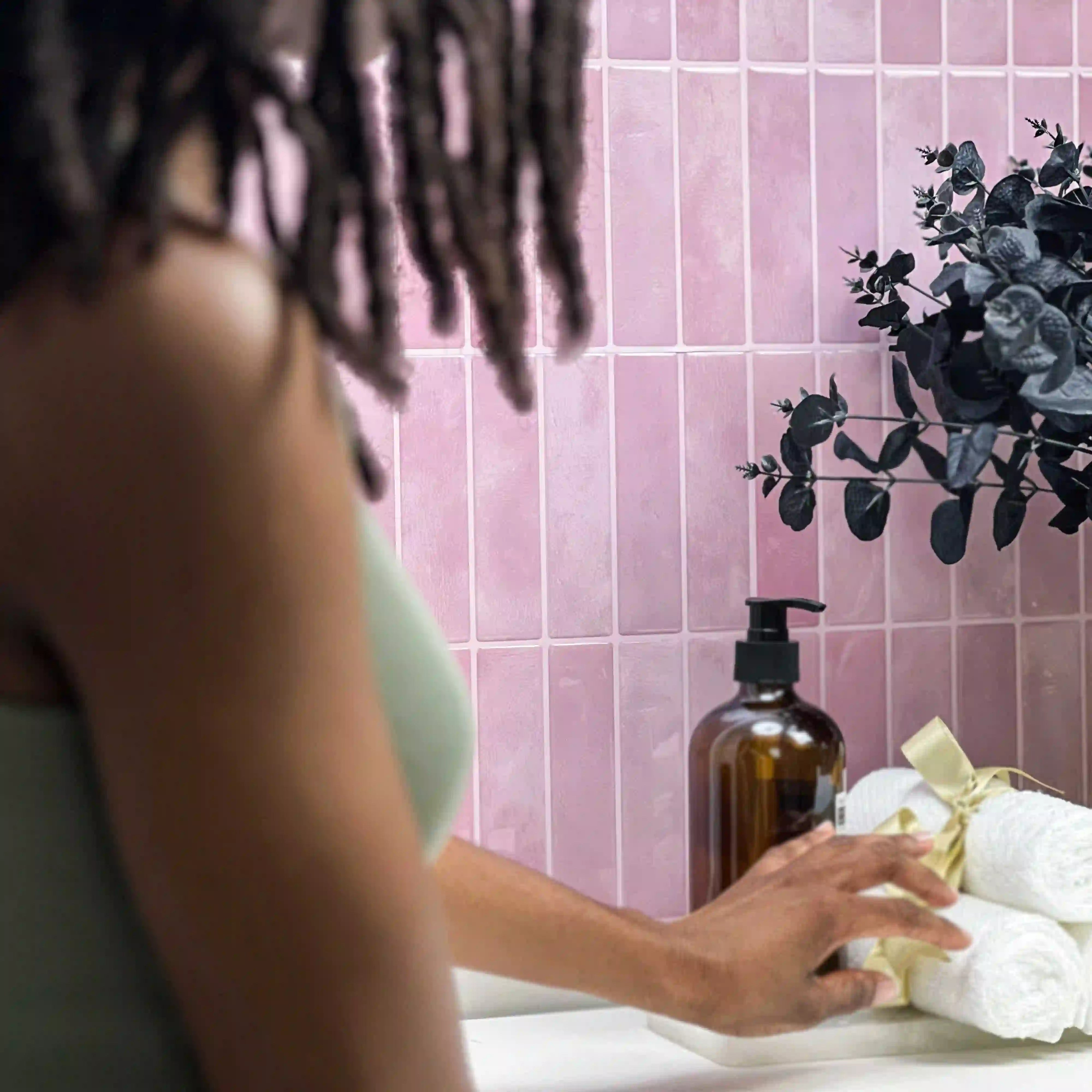
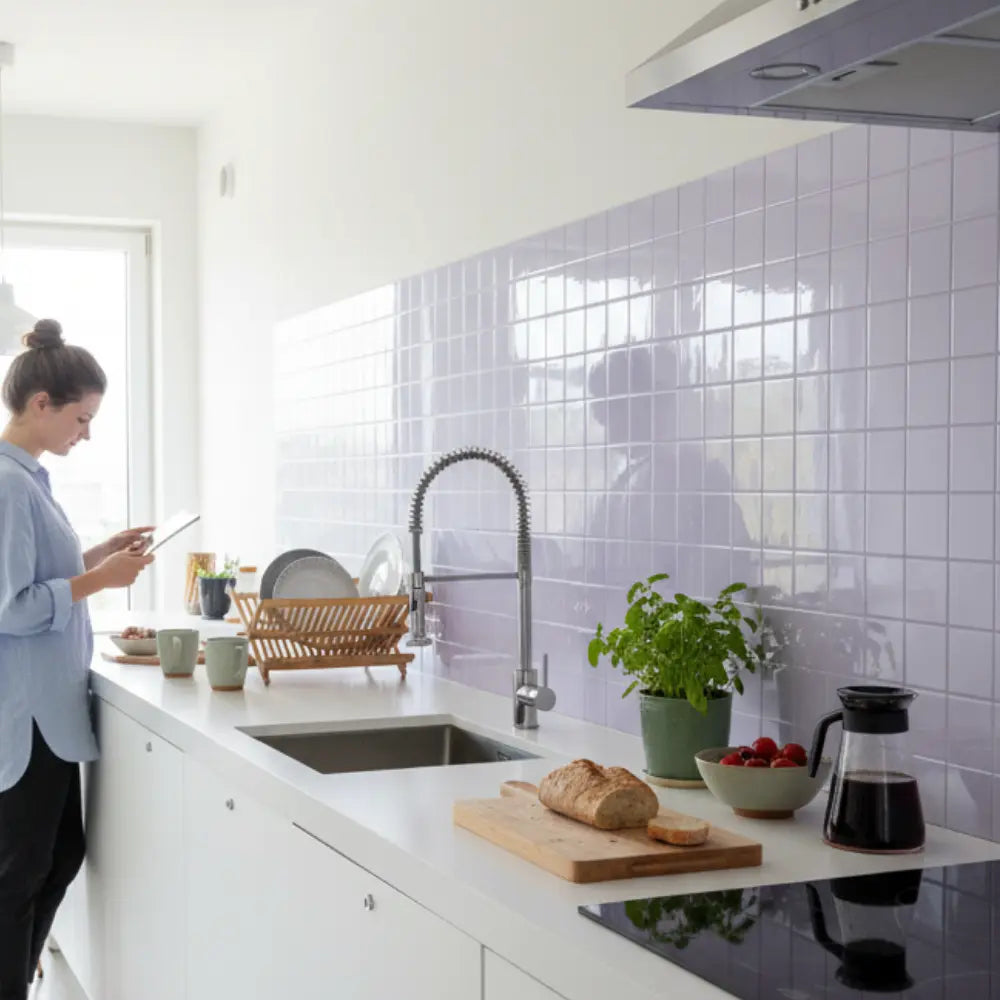
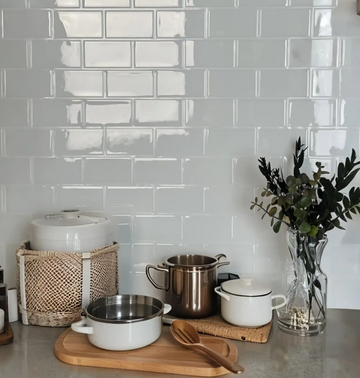
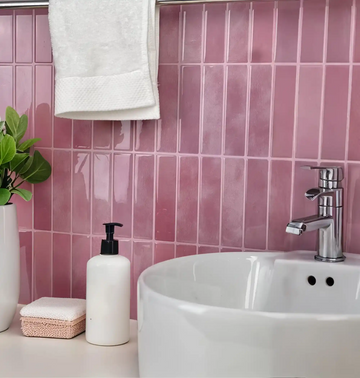
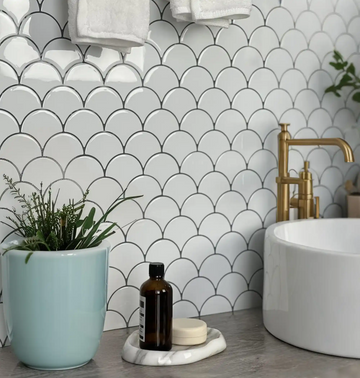
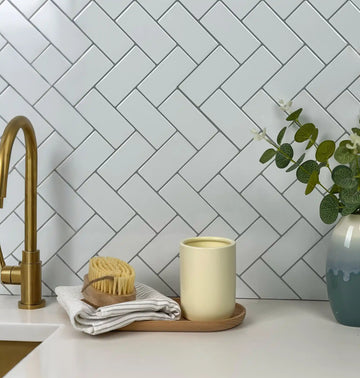
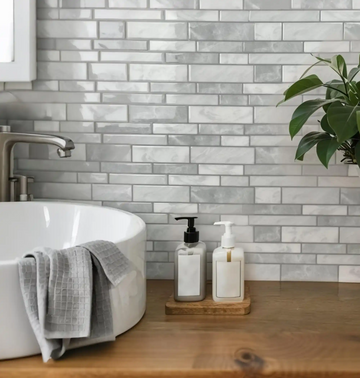
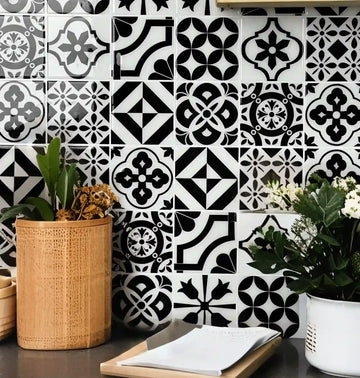
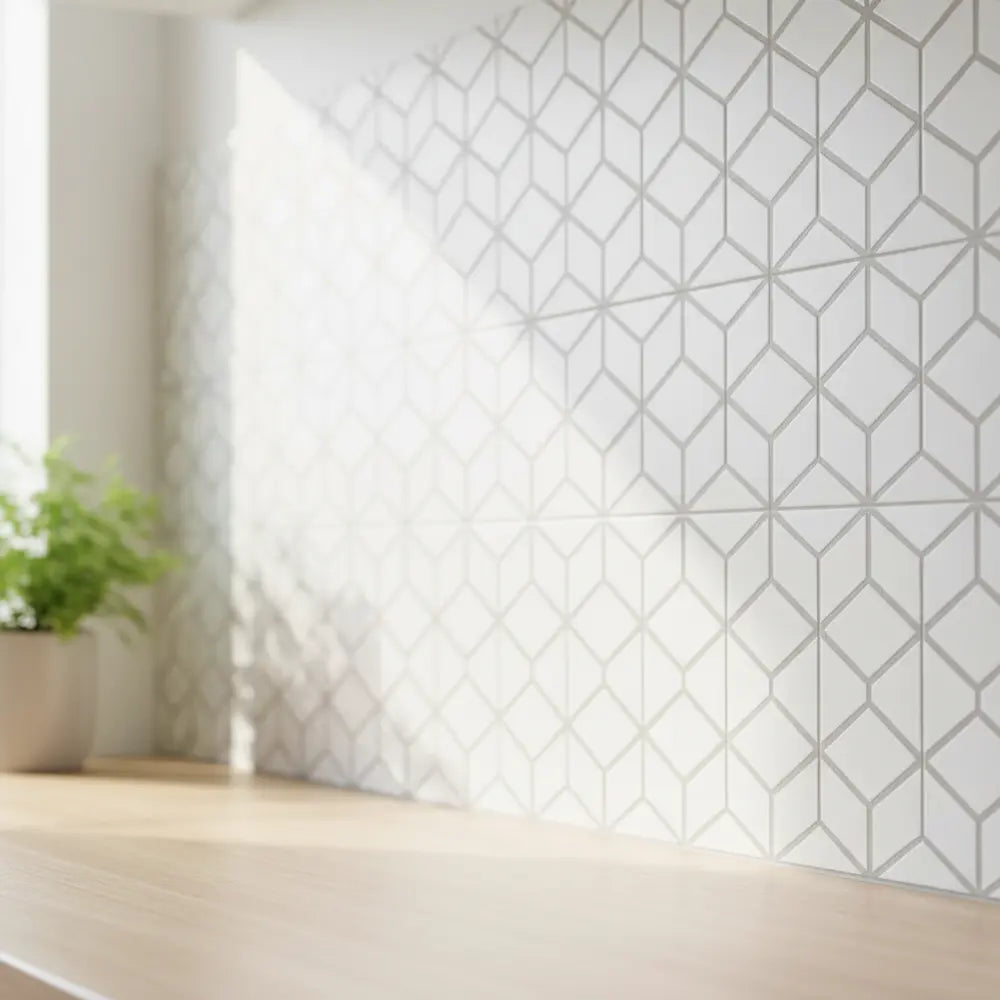
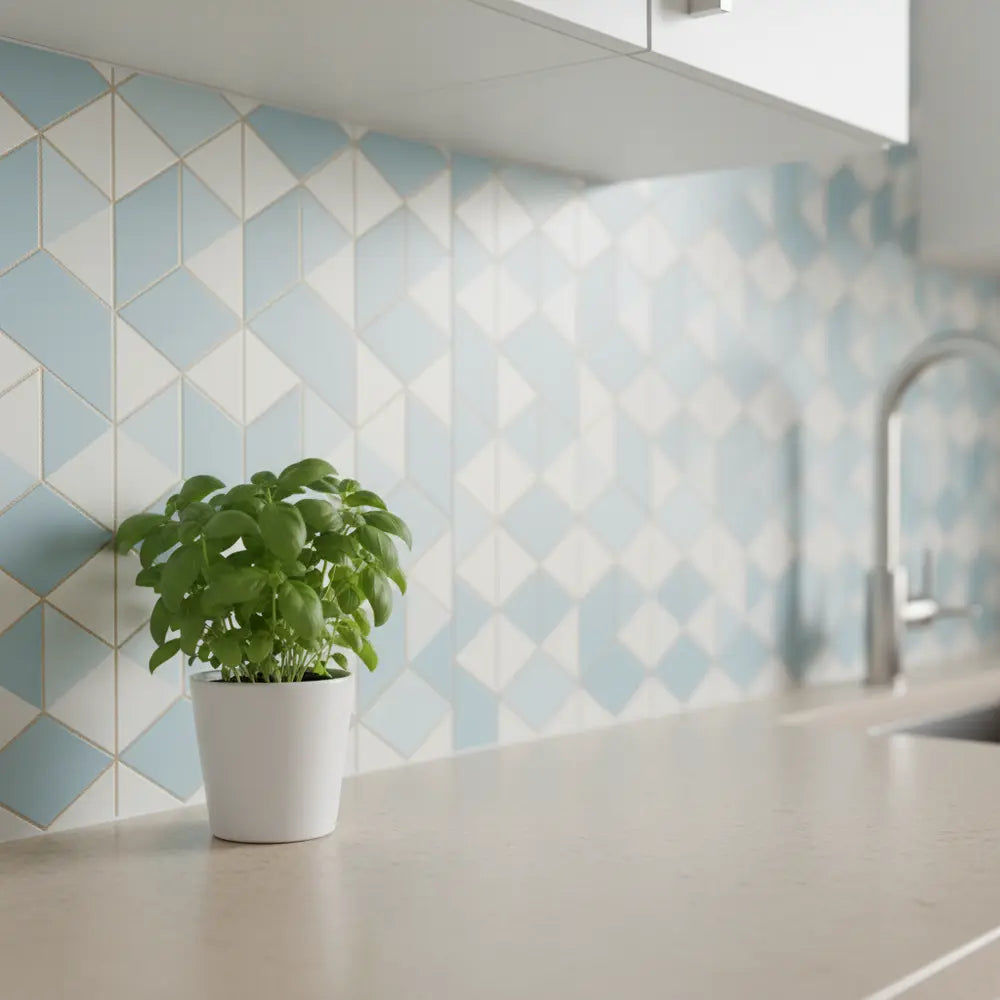
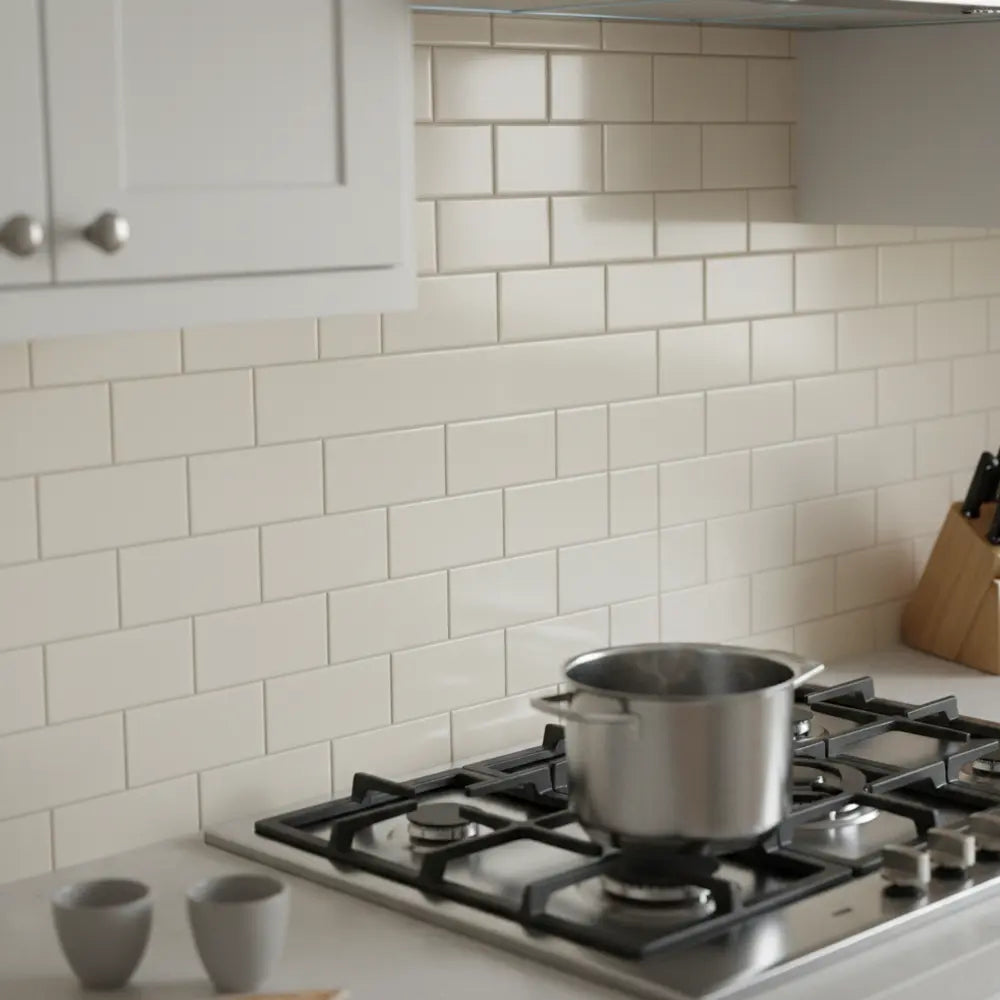
Hinterlasse einen Kommentar
Diese Website ist durch hCaptcha geschützt und es gelten die allgemeinen Geschäftsbedingungen und Datenschutzbestimmungen von hCaptcha.